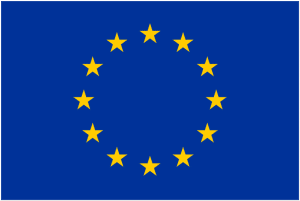How to design markets for the provision of electricity system services and enhance consumer engagement?
This is the second installment of the Topic of the Month: Building new knowledge on electricity market design and regulation
Context
The national systems that form the European electricity grid are becoming increasingly interconnected and integrated, while at the same time they are moving from the highly centralised architecture of the past to a more decentralised set-up. A growing amount of generation and storage resources are being connected at the distribution level, often behind the meter of final consumers. At the same time, consumers are electrifying their energy uses and deploying an increasing number of electric appliances that may be used in a flexible way. Traditional approaches to system planning and operation, both at transmission and distribution level, are inevitably challenged by these developments. New needs and requirements are emerging and call for an adaptation of the electricity market design that can benefit from the digitalisation of the energy system.
In this Topic of the Month we give insight into the four European Horizon projects that the FSR Electricity Team is currently contributing to.
OneNet Project
The H2020 project OneNet (One Network for Europe) aims to develop a new generation of products and grid services to facilitate the participation of demand response, storage and distributed energy resources in the European electricity system and markets. OneNet builds on the results of the two preceding projects in the call, INTERRFACE and CoordiNet, and further develops the existing TSO-DSO-consumer coordination mechanisms. The OneNet system uses an IT architecture based on innovative platform federation mechanisms. Four demo clusters, consisting of a total of 13 European countries, demonstrate the OneNet concept through multiple use cases ranging from long-term to short-term operational planning, balancing, congestion management and voltage control. OneNet has also set up a mechanism for continuous interaction with all relevant stakeholders at EU and national level through its large-scale discussion forum GRIFOn.
The focus of the FSR research in the project
European energy policy aims to enhance the participation of consumers in all electricity markets to unlock system resources, help reducing system costs, bring benefits to consumers, and, ultimately, strengthen security of supply and achieve the EU’s climate and energy targets. How to enhance consumer participation in electricity markets is less clear. Despite numerous studies highlighting the potential benefits for consumers and the system as a whole, the European experience is so far mixed, in particular as far as the smaller, residential consumers is concerned.
A potential remedy can be found in the emerging concept of ‘consumer centricity’. Indeed, the 2015 Energy Union Package envisioned an “Energy Union with citizens at its core”, and the Clean Energy Package, eventually adopted in 2019, foresaw the creation of “competitive, consumer-centred, flexible, and non-discriminatory electricity markets.” How to design consumer-centred electricity markets, however, is an open question.
The FSR OneNet research taps into these two areas. We explore what consumer-centric electricity markets are and which ways exist to enhance consumer engagement in these markets.
Consumer-centric electricity markets
Research set-up
Consumer centricity is a term that is often used by stakeholders and policymakers to express a vague ideal to reach or a principle to follow when it comes to reforming electricity markets. There is currently no common understanding of the concept behind this term. However, a more precise definition is needed to concretely contribute to the ongoing debate on the electricity market design in Europe.
We developed two research questions to delimit the scope of our research activities and maximise the relevance of our results for the OneNet project:
- How has the notion of ‘consumer’ in electricity markets developed over the years?
- How can consumer centricity be formally defined and what makes an electricity market design consumer-centric?
An extensive review of relevant stakeholder reports and academic literature provided the basis for addressing these research questions. In the future, we will use the answers to those questions to qualitatively explore some of the implications of adopting a consumer-centric approach in the definition of flexibility products’ attributes and system operators’ coordination schemes.
Interim research results
Our interim research results cover two areas in line with the two research questions: the evolution of the notion of ‘consumer’ and the characteristics of a consumer-centric electricity market design.
The evolution of the notion of ‘consumer’ in electricity. Neither a single common definition of consumer nor a clear, generally agreed upon, definition of ‘consumer centricity’ seem to exist. However, a closer look at the relevant EU policy and legislative files leads to the consideration that the concept of consumer-centricity builds on the earlier introduced (and still valid) concepts of consumer choice, protection, information, and empowerment. There is a clear evolution of the notion of ‘consumer’ from a passive type of consumer that is supplied at any time with as much electricity as needed, to an informed consumer that has the choice of supplier, and, finally, to an active consumer that can engage in electricity markets, both individually and collectively.
All these levels of consumer engagement exist in today’s electricity markets. It is important that consumers keep the right to remain passive and have their needs sourced by their traditional supplier. It is equally important that those who choose to engage are allowed to adopt a specific solution to satisfy their energy needs and preference, enter into a contract with innovative players or join an energy community, without being locked into them.
Characteristics of a consumer-centric electricity market design. Different perspectives on the characteristics of a consumer-centric electricity market exist. A review of the relevant literature shows that most stakeholders share the general view that consumer-centric electricity markets should be organised around the principle of allowing consumers to participate either individually or collectively without being hindered by market entry barriers and rules that do not correspond to their particularities as small market participants. Consumers should be able to easily navigate the markets and benefit from participating therein.
The concept of consumer-centricity can be applied to all electricity markets, from existing wholesale and balancing markets to new types of local/flexibility/TSO-DSO markets. In OneNet, we focus specifically on TSO-DSO markets for the provision of system services. In this context, we have developed working definitions of “consumer centricity”, “consumer-centric products” and “consumer-centric TSO-DSO markets.”
Consumer centricity can be referred to as the practice or ability of putting the consumer at the centre of all the decisions made by a firm, a regulatory authority or a policymaker. The consumer’s point of view is taken when developing a product, designing a market mechanism or elaborating a public policy. Starting from the identification of the value that the consumer can receive by consuming a certain good or service, the consumer’s experience is an important input parameter throughout the development process. Consumer centricity also means acknowledging the fact that consumers are not all the same and may have very different preferences and needs, and, as a result, may not attribute the same value to a certain good or service with specific characteristics. Ultimately, consumer centricity means giving the consumer the concrete possibility to choose what to consume rather than just how much.
A consumer-centric product can be defined as a product that enables consumers to effectively express their preferences and needs. The product’s attributes are understandable for consumers and consistent with the values they attach to them. A consumer-centric product is customizable and can be adapted to the specific preferences and needs of consumers. In turn, this requires that the product’s attributes must be distinguishable and that it is possible to price them separately. Consumers are not locked into a certain supplier but can procure the product from different providers. A consumer-centric product should be technology-neutral and tradable in volumes that are suitable for small market participants.
A consumer-centric TSO-DSO market can be defined as a market that is able to provide the system services required by the system operators at the transmission and distribution level, while generating additional value to consumers. Such a market not only allows system operators to improve the secure and continuous supply of electricity in a cost-effective manner; it gives consumers the opportunity to receive new offers which suit better their specific preferences and needs. Consumers can participate, directly or indirectly, in the provision of system services and be rewarded for that. They can interact with several intermediaries and select their level of participation, based on their ability to invest in distributed energy resources and their willingness to compromise in terms of comfort and service reliability. Value stacking should be possible by accessing several markets simultaneously. Another important feature of consumer-centric TSO-DSO markets is easy access to relevant information for consumers and their intermediaries.
From these working definitions, it is clear that consumer centricity was not a feature of the electricity industry for most of its history. Consumers used to receive a standard service, normally under regulated conditions. However, in recent years the development of new technologies for the generation, consumption and storage of electricity, the emergence of new digital solutions that enable a more granular and effective management of energy systems, the electrification of final uses, and the increasing consumer awareness of energy and climate issues have radically changed the landscape and are strengthening the case for the adoption of a more consumer-centric approach within the electricity sector.
Consumer engagement
Research set-up
Consumer engagement represents the Holy Grail for many policymakers and regulators. Being able to mobilise resources located behind the meter would unlock a significant amount of flexible demand to match the increasing volumes of variable and often decentralised generation in the European electricity system. However, consumers look reluctant to participate in electricity markets and provide their flexible resources for the benefit of the system.
In our ongoing research, we ask two main questions:
- What are the barriers to consumer engagement in electricity markets and, more specifically, in the TSO-DSO markets?
- What can be done to enhance customer engagement in those markets?
To answer these questions, we decided to use a number of qualitative methods. An extensive review of academic literature and relevant stakeholder reports provided the preliminary knowledge base. Building on it, we developed an analytical framework to channel our thinking on the second research question. We also teamed up with other OneNet tasks to develop targeted surveys for the OneNet demonstration clusters and collect additional evidence from real attempts to engage consumers in the provision of system services. Finally, together with our research partners we will engage with relevant stakeholders within and beyond the project consortium to receive informed feedback on our research.
Interim research results
So far, interim research results cover the first of our two research questions: barriers for consumer engagement.
Barriers for consumer engagement. Several barriers hinder consumer engagement in electricity markets. Although there is no consensus on a specific way of classifying them, four groups of barriers are apparent when reviewing the existing academic literature and the most recent experiences. They are:
- Technical barriers
- Economic barriers
- Legal barriers
- Behavioural barriers
Technical barriers are due to the lack of certain technologies and infrastructure needed to monitor and control the generation, consumption and storage assets located at the consumers’ premises. Technical barriers can also be the result of missing communication infrastructure or the lack of interoperability. Inadequate digital platforms and other interfaces with TSO-DSO markets equally represent technical barriers. Because of these barriers, consumer engagement can be technically difficult or even impossible.
Economic barriers are due to insufficient incentives for consumers to engage. Participation in the TSO-DSO markets may be technically feasible, but the economic benefits that can be derived from them may be limited when compared to the cost of engagement. Limited economic benefits can result from, inter alia, the low value that flexibility can command on the market, the inconvenience of losing control of your own consumption, and the expenses related to the deployment of the necessary hardware or software. Because of these barriers, customer engagement can be economically unsustainable.
Legal barriers are due to the constraints posed by law and sector regulation, which may limit or entirely prohibit the participation of some or all consumers in the TSO-DSO markets. This can result from the need to fulfil minimum entry conditions to access a certain market. Or it can derive from rules on data protection and privacy that prevent flexibility service providers and other types of intermediaries to access relevant consumer data. Because of these barriers, customer engagement can be legally ‘discouraged’ or even not allowed.
Behavioural barriers are due to specific behavioural patterns exhibited by consumers, which can hinder consumer engagement even when it is technically feasible, economically viable and legally possible. Behavioural barriers can result from consumer inertia and preference for the status quo, lack of trust in new intermediaries, or because of limited awareness and inability to understand the benefits of engagement. Because of these barriers, consumer engagement can be behaviourally challenging.
The boundaries of these four groups of barriers are not always neat and it may be difficult to univocally allocate certain barriers to just one group. Nonetheless, we believe that the classification of barriers into these four groups is a useful first step to produce recommendation on the possible strategies for enhancing consumer engagement. Overall, it is also important to remember that consumer engagement is a multi-dimensional phenomenon. Consumers are not all the same and they do not take their engagement decisions in just one step. The nature of the service or good exchanged also matters. The same is true for the nature of the counterparty with whom the consumer interacts. Therefore, a certain barrier or group of barriers may be more or less relevant, and its effects need to be assessed on a case-by-case basis.
We welcome your input!
In the coming months, we will further develop our research on consumer-centric electricity market design and consumer engagement. Watch the OneNet space for updates on these and other topics. Do you have experience in engaging consumers in markets for system services or have you done research on the matter? Write to us at nicolo.rossetto@eui.eu or valerie.reif@eui.eu.

OneNet project has received funding from the European Union’s Horizon 2020 research and innovation programme under grant agreement No 957739. Find more







